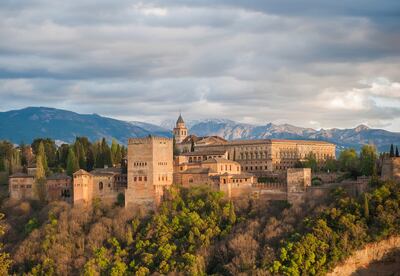A friend of mine makes good use of Twitter to display his wide range of interests in the fields of heritage, the arts and more besides. And so, through something my friend had shared, I came across a fascinating article in the Spanish newspaper El Pais about a programme to bring back to life some of the 1,000-year-old water channels called acequias that once irrigated much of the landscape around the city of Granada in the south of Spain.
The Aynadamar acequia was originally built in the 11th Century to supply Granada’s historic Albaicin quarter. It later supplied the artisans of the Nasrid dynasty who built the Alhambra Palace, one of the glories of Arab-Islamic Spain, in the 12th and 13th Centuries. It remained operational until the 1980s, when it fell into disuse because road construction interrupted its flow.
Thousands of kilometres of acequias were built, supplying water not only to cities like Granada but towns, villages and hillsides across southern Spain, Al Andalus (Andalucia).

This model became obsolete as people moved from the countryside to urban centres and agriculture became more intensive, and, from the 1960s, the acequias were gradually abandoned.
In the past few years, though, there has been a little revival. In 2014, villagers in the tiny town of Canar, with help from the University of Granada, began work to restore their acequia, digging out the old channels and removing decades of rubbish. With the water flowing again, not only Canar but other towns downstream benefit, as the community works together to preserve and cherish something of value to them all.
By the end of March, the Aynadamar acequia will be flowing once again, irrigating the University of Granada campus.
A historian involved in the project, Jose Maria Civantos, told El Pais that the overall project has involved work on more than 80 kilometres of acequias, with 14 of them being brought back into use. With an estimated 3,000 km of acequias alone in the Sierra Nevada, around Granada, there is much more to be done.
Mr Civantos notes: “It is also about the social recognition of rural areas, agricultural activity and local knowledge, which is scientifically valid in most cases, all of which generates landscapes with cultural and environmental value – immense resources that are key to guaranteeing our future as a species.”

It's a wonderful project. I wonder whether it could be adapted for use in the UAE. Anyone who has wandered around the UAE’s mountains will have noticed the old terraced fields that have been abandoned, some recently, some in the distant past. In the mountains above Ras Al Khaimah, there is evidence that much of the food required for the thriving ancient seaport of Julfar was once grown here. The fields are mute testimony of a time when the mountain dwellers harnessed resources effectively. They would not otherwise have survived.
Some of those fields are gradually being brought back into use – for example, in Wadi Baggara, near the little town of Sifini, in southern Ras Al Khamiah – but often with the use of pumps, not by revitalising and employing the old skills that once made it possible for food to be grown in now-barren areas.

While the UAE is making impressive strides towards meeting its long-term food security goals by growing food locally, most of our food today is still imported. Most of the water used for irrigation is derived from desalination plants, especially as supplies of freshwater in lowland areas are being depleted. And, with the drift of population to the towns and cities, mountain settlements are becoming depopulated, or being used as weekend homes.
Is there something we can learn from the Spanish experience with the acequias? After all, perhaps on a smaller scale, it is clear that there are parallels between the amazing talents of those who built the irrigation systems of Al Andalus and those of the ancient inhabitants of the UAE’s mountains.
One of my favourite spots in the UAE is Fujairah’s Wadi Safad. There you can find the hilltop fortress of Husn Safad with, just above the wadi bed below it, ancient field systems with their now-abandoned irrigation channels. I dream of the fortress being once again surrounded by verdant greenery, watered by restored little rivulets of water. Some of the fields have been revived in recent years, though there is more yet to be done.
It would provide a boost to local agriculture and food security. It would make a sustainable use of neglected water resources. It would attract visitors. And if, as well, it helped the rural economy, that would be a real contribution to the UAE’s drive for sustainability.

